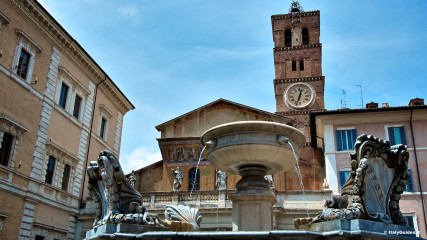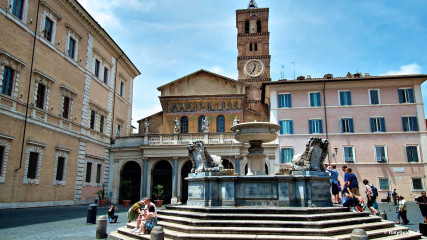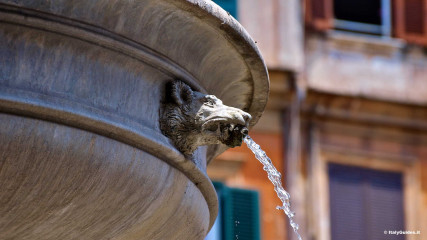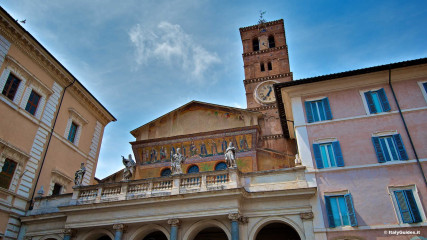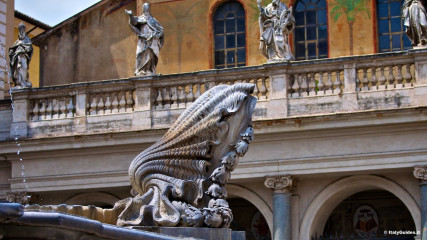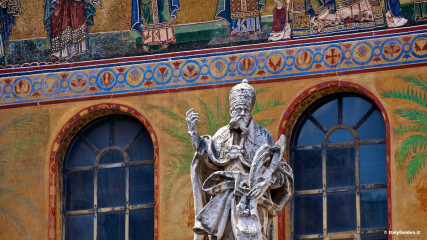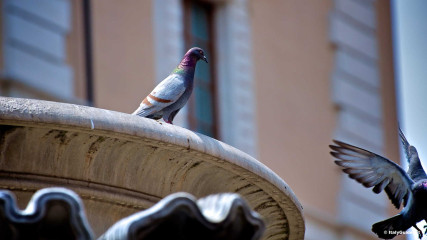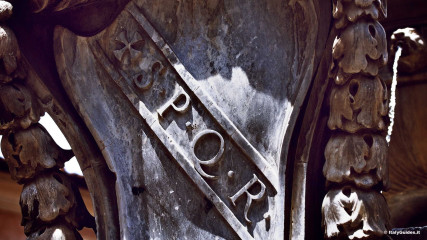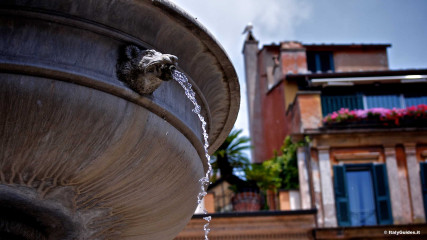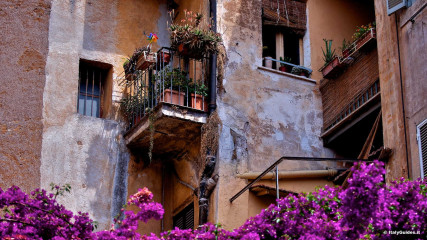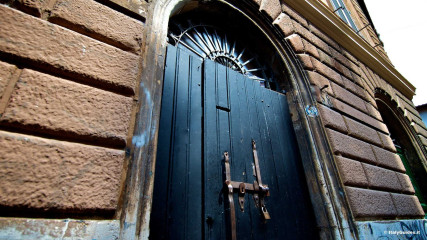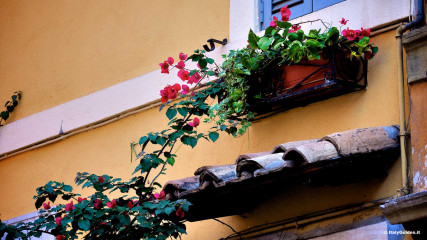A microcosm encapsulating epochs, peoples and living styles. All wound up in a fascinating complex of intertwining medieval streets and dwellings, both aristocratic and common. The sun dappled cobbled streets draped in ivy, punctuated with window boxes; the rattle whizz and purr of precarious mopeds; washing stretched across streets to dry: street vendors, artists, the mouthwatering aroma of freshly baked pizza and "all manner of folk" characterize Trastevere.
Literally translated, the word "Trastevere" comes from the Latin "trans Tiberim", meaning "beyond the Tevere".
Until the time of the Emperor Augustus, the area was immediately outside the city, linked to a port upriver, and specialized in trade. In Augustus' time it was so densely populated, that the Emperor established here one of the the guards' residences. A barracks stood not far from where the church of Saint Crisogono was later built. It was home to almost one thousand guards, acting as an emergency service, for fires and local disturbances.
Trastevere represented one of the more cosmopolitan districts in Rome. Inhabited by a combination of Romans, Greeks, and Jews who lived nearby. As with every cosmopolitan city, it was a melting pot of cultures, cuisine and customs.
To this day, the "Trasteverini", the inhabitants of Trastevere, are "authentic Romans", known for their dialectic use of Italian and down to earth "live and let live" approach to life, who for centuries have lived in a working environment of cultural integration.
The establishment of the Jewish colony was probably the reason for the early spread of Christianity in the area, and the establishment of various "tituli" (parishes) such as Santa Maria in Trastevere, Saint Crisogono and Santa Cecilia.
The official evolution of Trastevere was slow. Though crucial for business in the city, it was 1200 before it became the thirteenth officially recognised district of Rome. Its banner, a golden lion on a red background, symbolises the pride of the district, and the blood of the martyrs who died in the early days of the Christian era. The lion may also refer to the Guelf party, which stood for the Pope, and had many supporters in the area.
The streets and alleys remained unpaved till 1400, when Pope Sixtus IV had bricks laid. However proving unsuited to wagon wheels, they were later replaced by the "Sampietrini" (cobblestones), which remain to this day, making navigation by bicycle and moped, a hazardous undertaking.
Trastevere's water comes from an ancient aqueduct, first built by the Romans during the reign of the Emperor Trajan. Pope Paul V in the Sixteen Hundreds, reconstructed the aqueduct which was re named Aqua Paola in honor of the Pope. It leads to one of the largest and most dramatic fountains in Rome, known as the Fontanone (the large fountain).
The Hospital of San Gallicano and the complex of San Michele a Ripa, were also constructed in the same century. The latter, created originally as a charity centre, later became a detention center, before being transformed into its present capacity as headquarters of the Ministry of Culture.
Till the Eighteen Hundreds the Tevere had been central to trade and commerce, and flowed at street level, frequently bursting its banks, flooding the city as far inland as Piazza Venezia. The Piedmonteses, who arrived in 1870, were immediately confronted with the nightmare of flooding: the water level rose by seventy meters, causing chaos all the way to the Spanish Steps.
Such drama called for serious action: notwithstanding the necessity of destroying several ancient churches, and quartering the splendid Palazzo Della Farnesina garden, they walled in the river.
The subsequent lower water level made the river much less likely to flood, and less accessible. Though perhaps beneficial from a hygiene and convenience point of view, the diminished role of the river meant that Trastevere lost its importance to Rome as a link in the trade chain.






